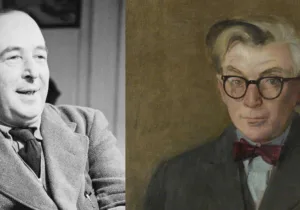In the two months since Russia invaded Ukraine, many commentators have asserted that “history” or “the Cold War” was back. According to them, not only had the post-9/11 era ended, but perhaps the entire unipolar moment since the collapse of the Soviet Union was over. These are not new anxieties for Western strategists, but Vladimir Putin’s invasion forecloses any illusion about these realities. To state this is to risk cliché. And yet, if the Ukraine war proves to be a watershed moment in the return of great power competition, then even a cursory reconsideration of the last period of competitive statecraft promises to yield some insights in how to (re)construct a strategy for the times.
I was thinking about the Cold War as a strategic classroom when I began reading Hal Brands’s newest work. It promised not to be a new analytical magnum opus on well-traveled ground, but rather a conceptual instruction for the new age of competitive statecraft unfolding in Europe, Asia, and elsewhere. Few book releases are as serendipitous as The Twilight Struggle: What the Cold War Teaches Us about Great-Power Rivalry Today. The book arrived in time for me to begin reading during Putin’s marshaling of the Russian army on the borders of Europe, but before the Russian invasion of Ukraine fully commenced. Reading Twilight Struggle alongside the early phase of the Ukraine war lived up to its promise.
Brands offers seven key lessons for his readers about what he terms a “twilight struggle,” a period of high-stakes competition between great powers that occurs between the darkness of war and daylight of peace.[1] This first lesson is perhaps the most crucial because it separates twilight struggles—I prefer the term competitive statecraft—from other periods. These periods are not the same as generic great power rivalry, wherein the competition is, at times, mutually beneficial. No, here the prospect of major war is not only present, but increasingly possible.
To this he adds that such struggles are interactive, occur with finite resources, are comprehensive, and ultimately unsatisfying; they test institutions, or systems, and place enormous pressures on strategists. Although this review cannot treat them all, Brands has captured the essential lessons any current or aspiring strategist ought to learn. Readers should not take these lessons as direct one-to-one prescriptions; if this new period of competition between the United States and its allies against Russia, China, and their allies will be a cold war, the analogy to the Cold War only carries us so far. Brands knows this, and readers should approach Twilight Struggle first as conceptual sketches for learning outcomes, and, second, as rough suggestions on how that learning could come about.
For example, the chapter on working within limits proved acutely insightful these past months. All strategies are unsatisfying. Even a good one in the best of circumstances will run into friction and require moderated expectations. Once implemented, strategies are fraught with challenges of managing alliances, domestic constituents, and resources. I’ve known this for some time, but I took for granted how deeply counter-intuitive it is to new students of strategy. In nearly every conversation since the invasion of Ukraine began, the predominant conceptual struggle for others has been how poorly implemented strategies line up with empirical reality.
Competitive statecraft is ultimately unsatisfying because the limits of what we know obscure the certainty with which strategists can speak to the expected results. Brands notes for instance that a move toward de-escalation might signal the opposite of its intention. Democracies tend to impute moral content to choice, thereby viewing de-escalation as always, or nearly always, good. But in practice, Brands writes, rivals may think it was chosen out of weakness and opt to escalate either the intensity or scope of the competition.
Speaking of limits, the book isn’t perfect. Brands is perhaps best known for analyzing grand strategy through the policy-making process.[2] The approach has merit. But we should be cautious to think of grand strategy as strictly or predominately process. As John Gaddis remarked, strategy is the reflective calibration of means and ends, but it means equal weight must be placed on each of those. Without a thoughtful reflection on ends, there is no strategy. And while Brands is aware of that, readers of Twilight Struggle should remember that a too close emphasis on process without purpose results in a strategic vacuum, to borrow from Gaddis’s criticism of the Kennedy-Johnson years. Another limitation of the book is that its level of abstraction might lead novice readers to conclude that only a cursory understanding of history and strategy is needed to draw the correct “lessons of history.” Doing so would be a mistake. Whether as a first book or as a summary, Twilight Struggle works best when read alongside other works on the Cold War and grand strategy.[3]
These limitations should not dissuade readers from picking up Twilight Struggle, because there is more to appreciate than criticize. Among the book’s many virtues is the recognition that the Cold War was never strictly a debate of hard power or “geopolitical interests” but, as Brands notes, “the larger principles—self-determination, democracy, human rights—that Americans had shed so much blood to defend.”
If he hasn’t done so by now, Twilight Struggle should cement Brands’s status as the dean of the New Grand Strategists, the scholars of American strategy who have come of age post-9/11.[4] In his latest offering, Brands invites us to ask important questions and, where possible, sketches out the basic contours of conceptual hurdles which must be surmounted if the United States is to have a lasting impact on the remaining decades in this century. It is too much to claim that Brands offers the right answers. But in framing the questions and important lessons, we are better situated for developing enduring strategies for the twilight struggle ahead.
[1] The phrase is from John F. Kennedy’s First Inaugural Address.
[2] See also, Ionut Popescu.
[3] As a starting point, readers should consider the reflections on teaching at Yale’s grand strategy program by John Gaddis, or the late Charles Hill.
[4] Only some of us in this cohort have a memory of it, and even then, only of its waning years. For others, the entire period occurred without our living memory.







 Sponsor a student for Christianity & National Security 2024
Sponsor a student for Christianity & National Security 2024